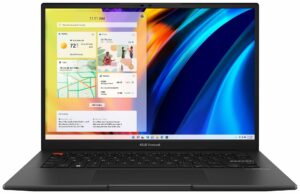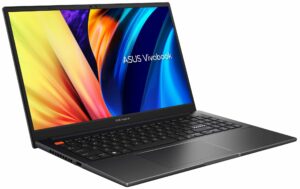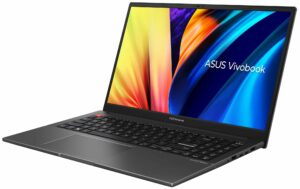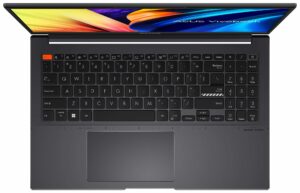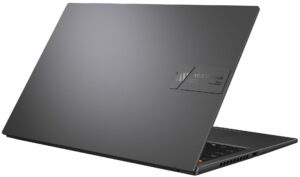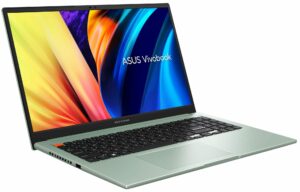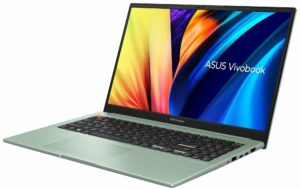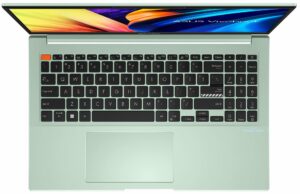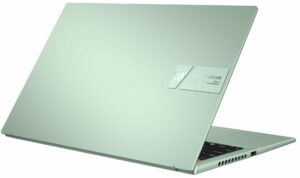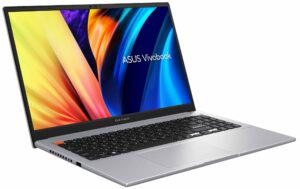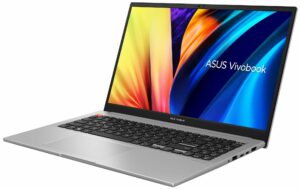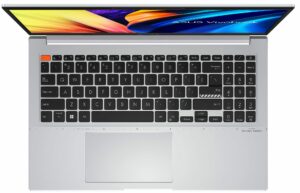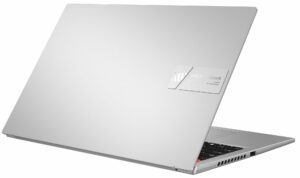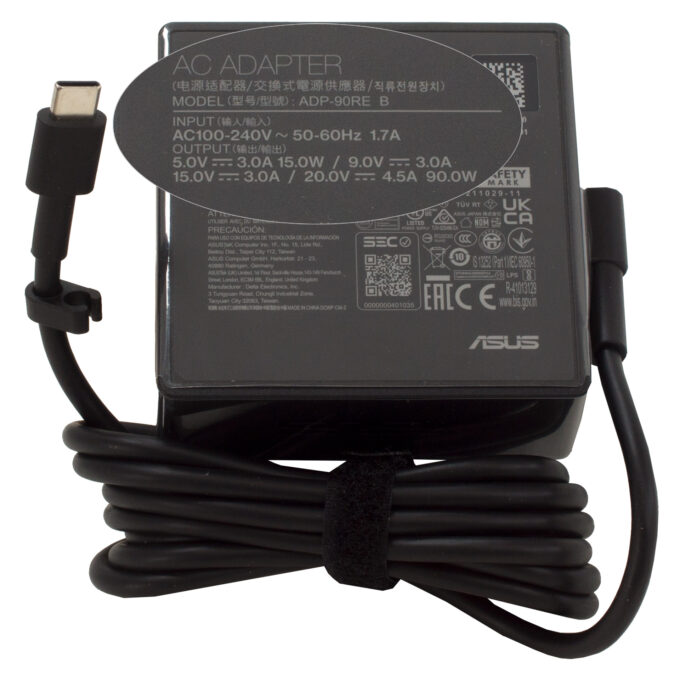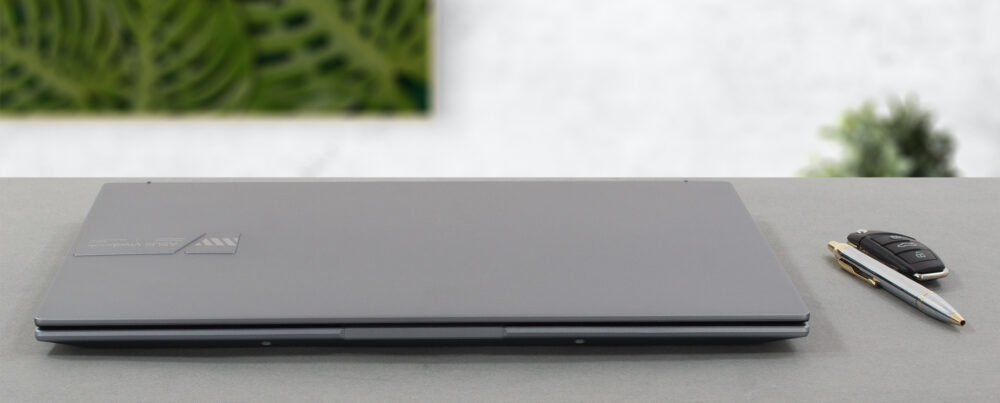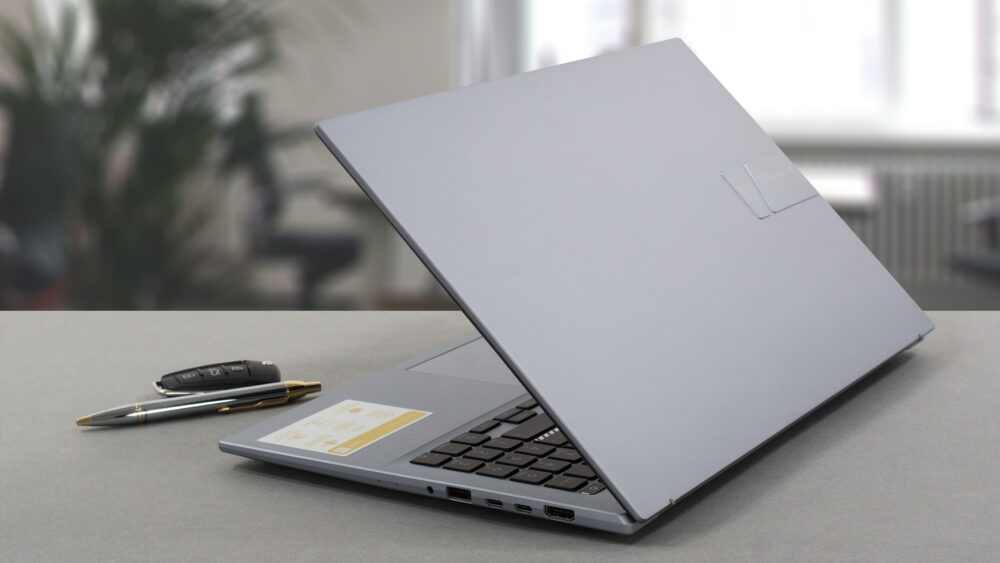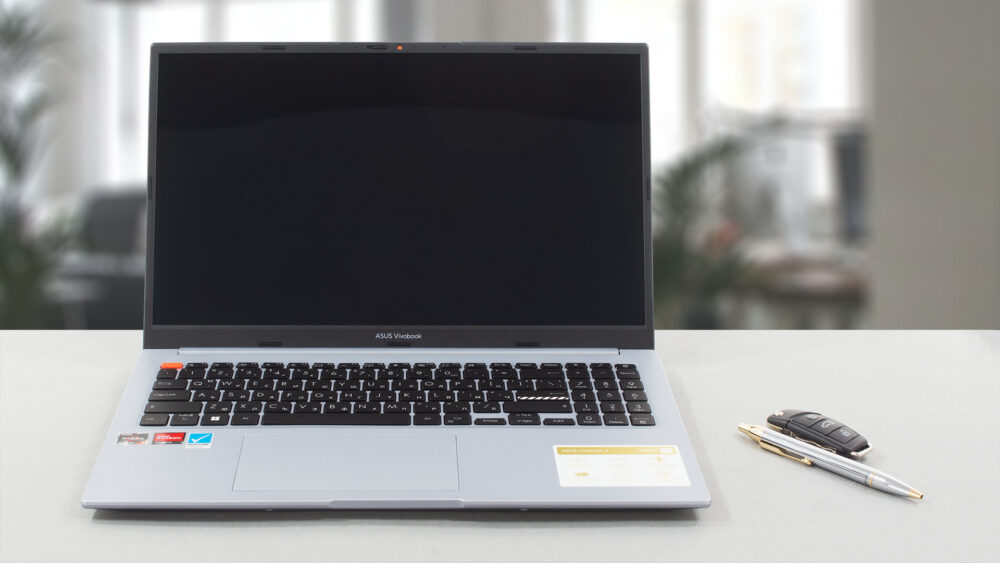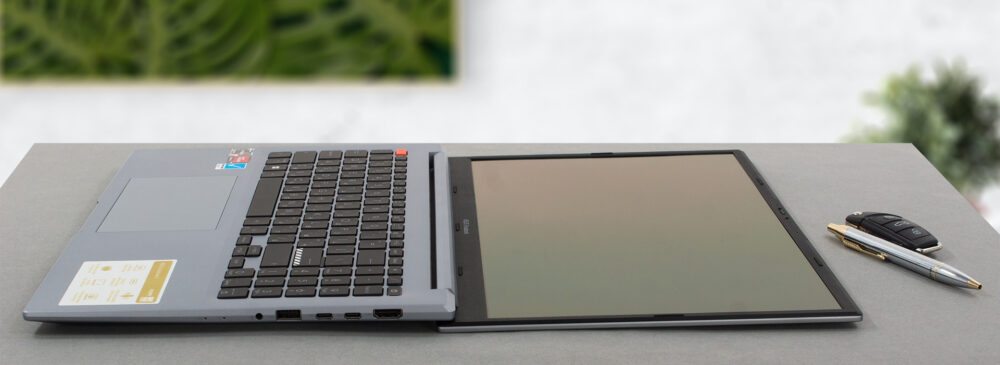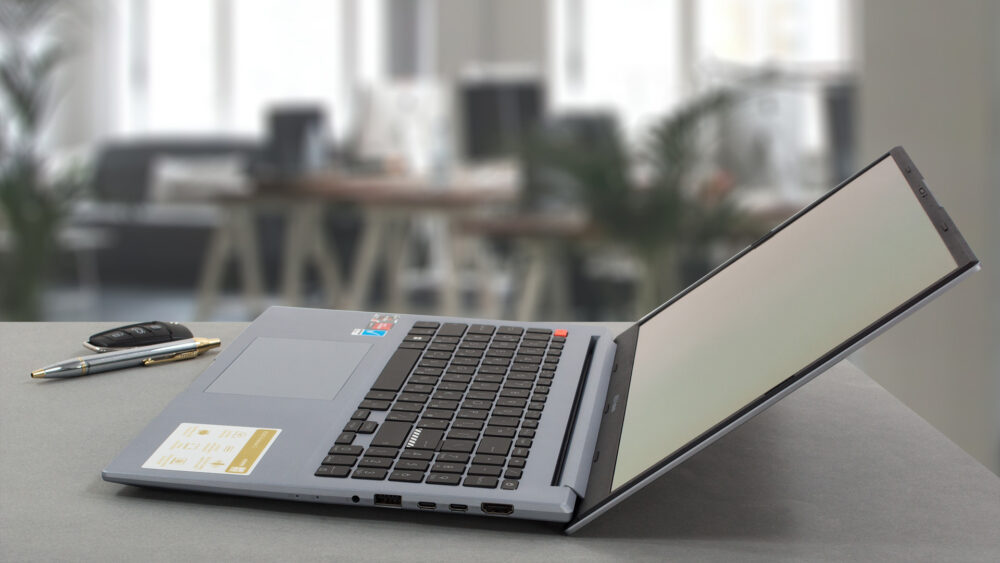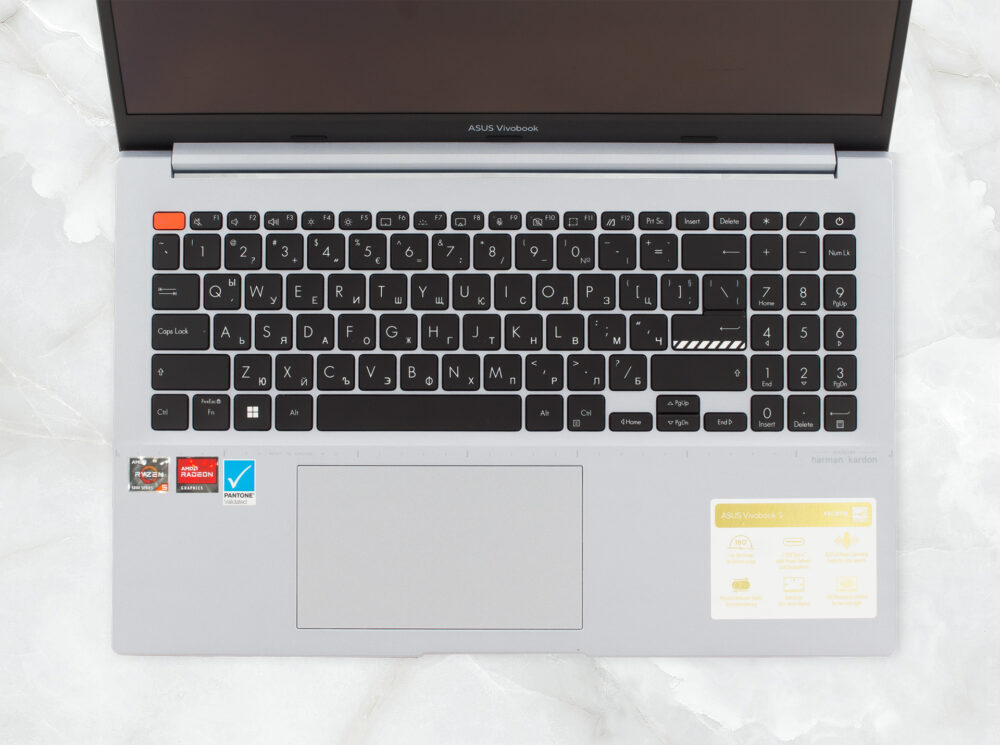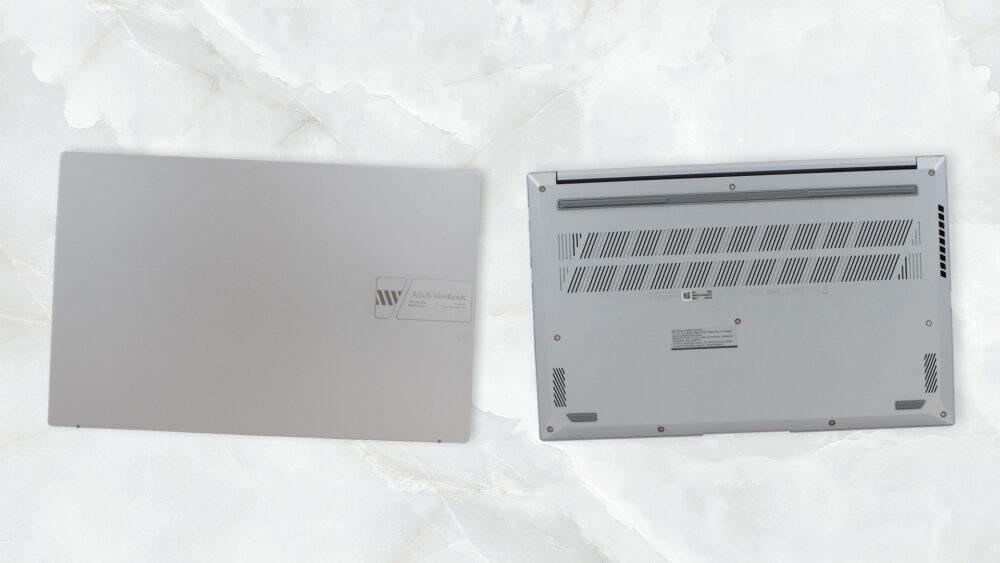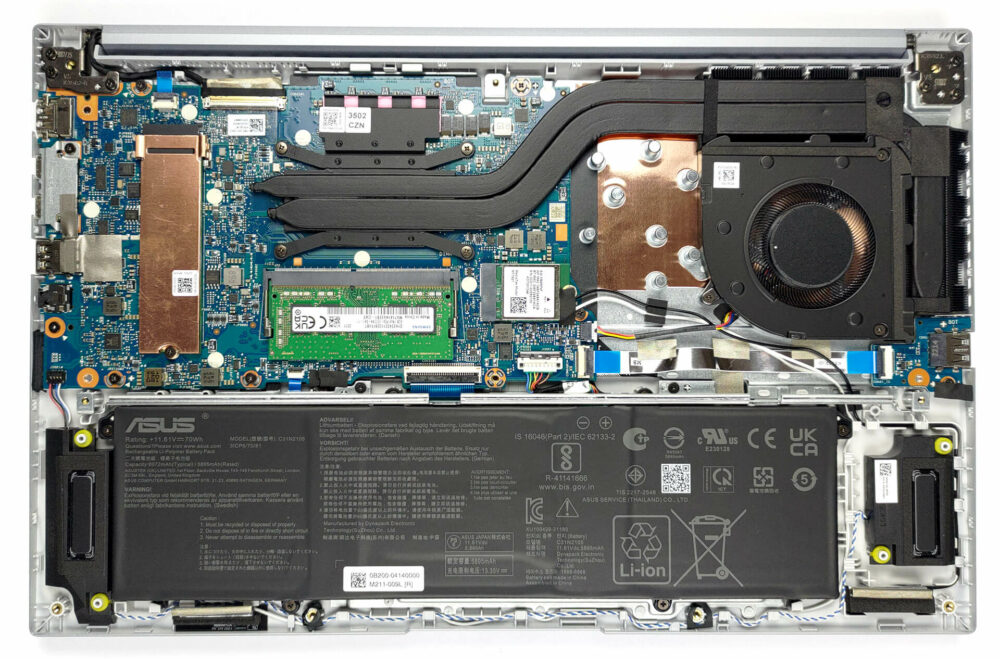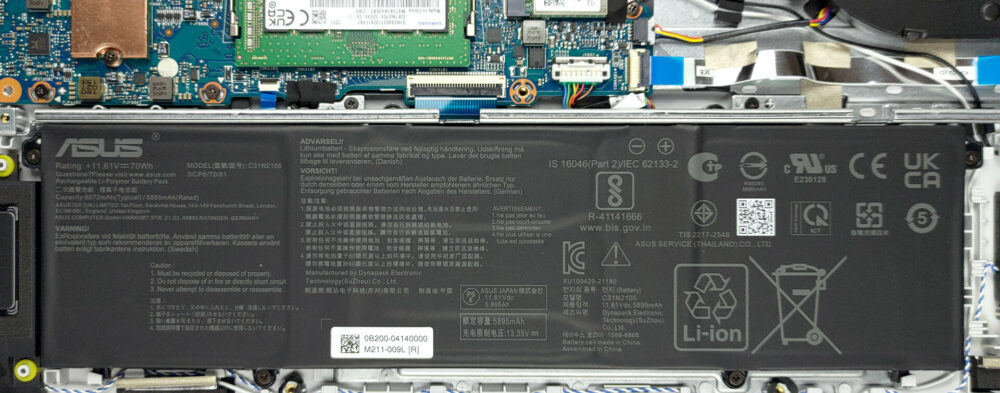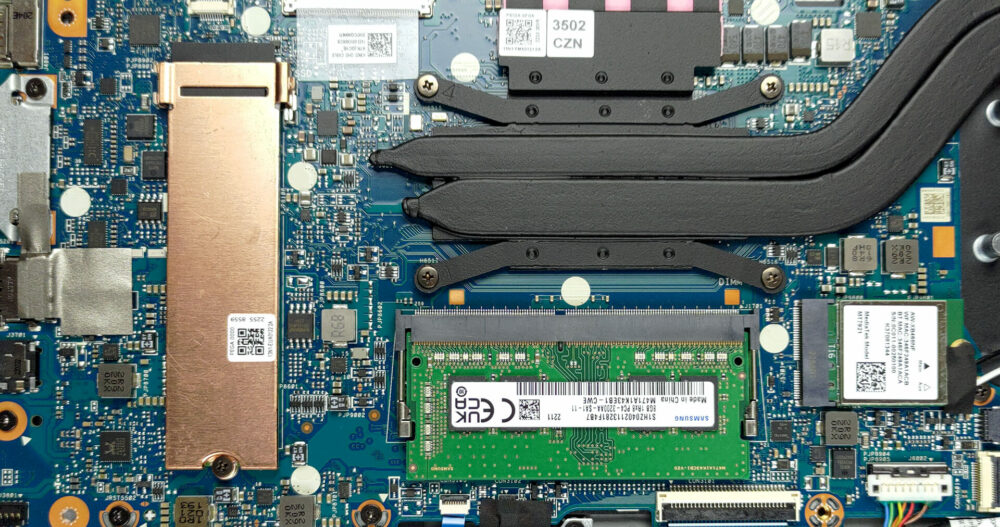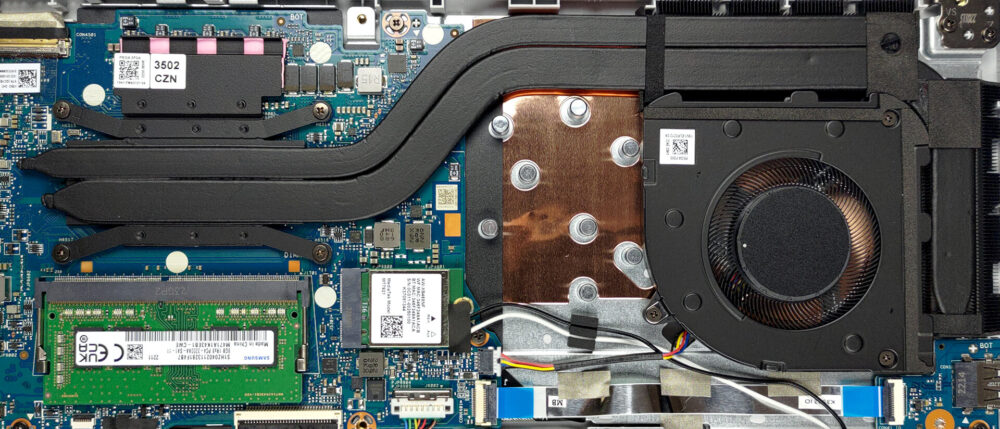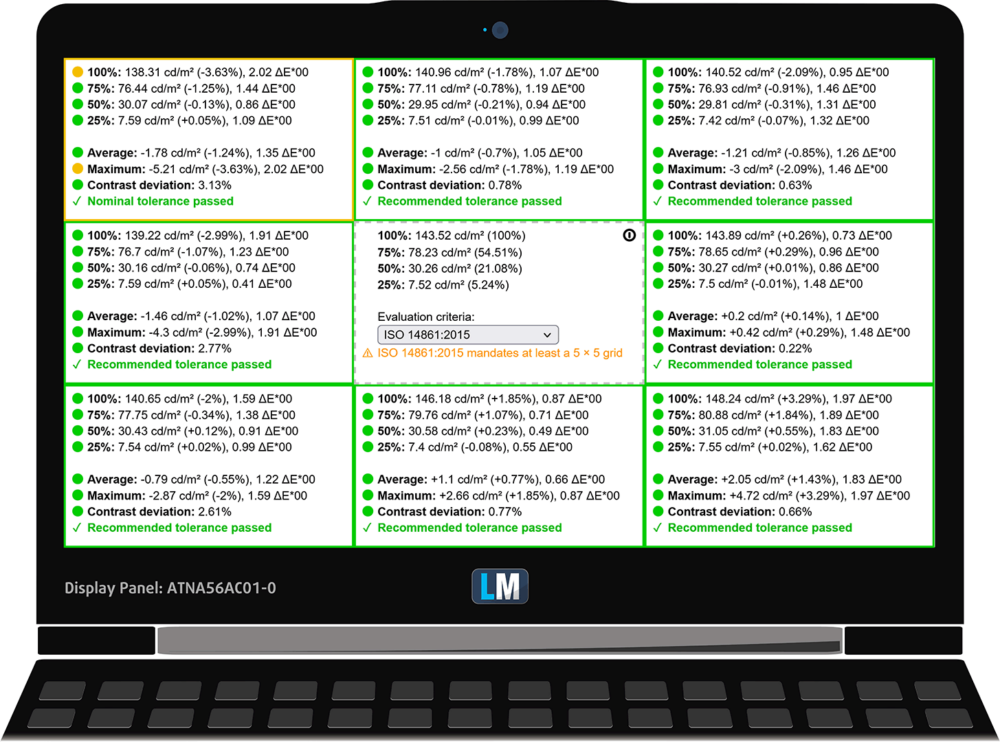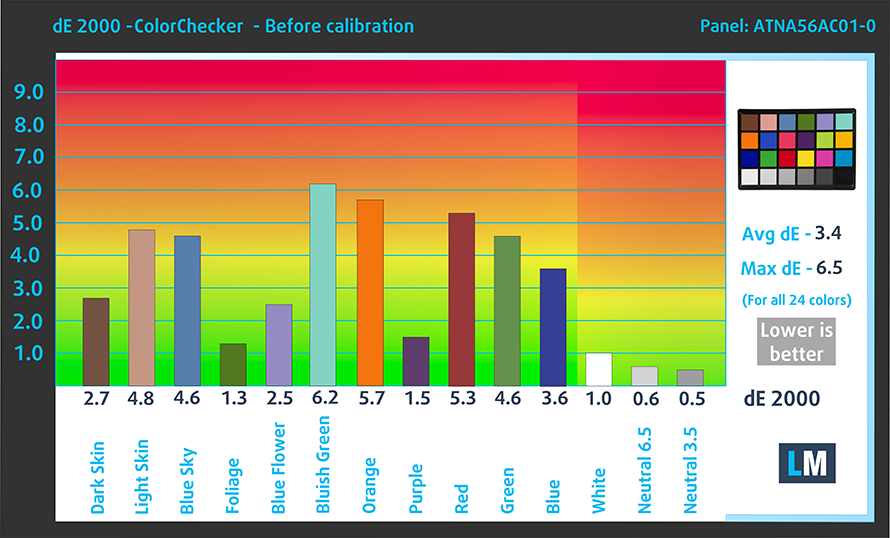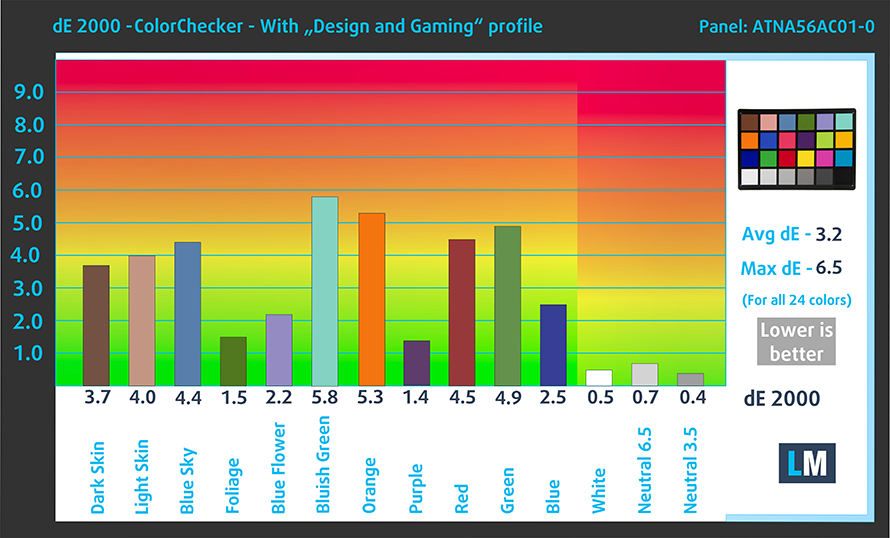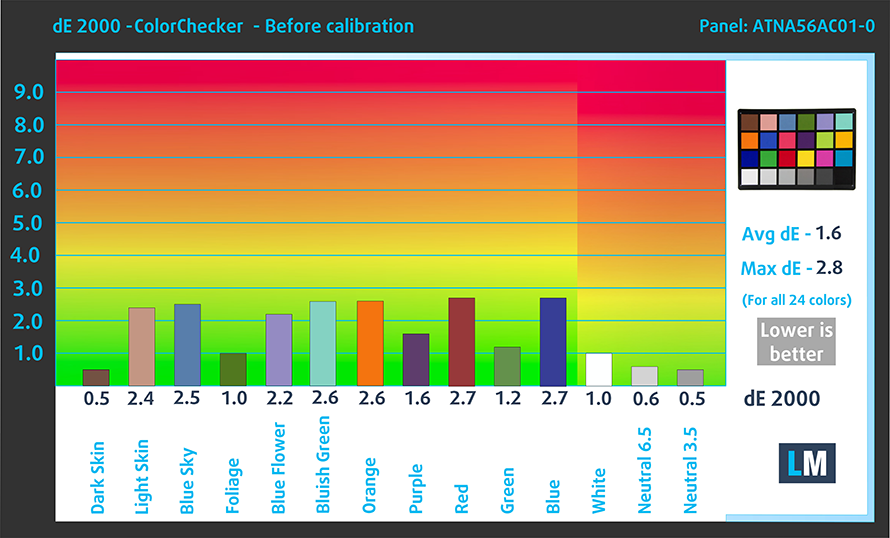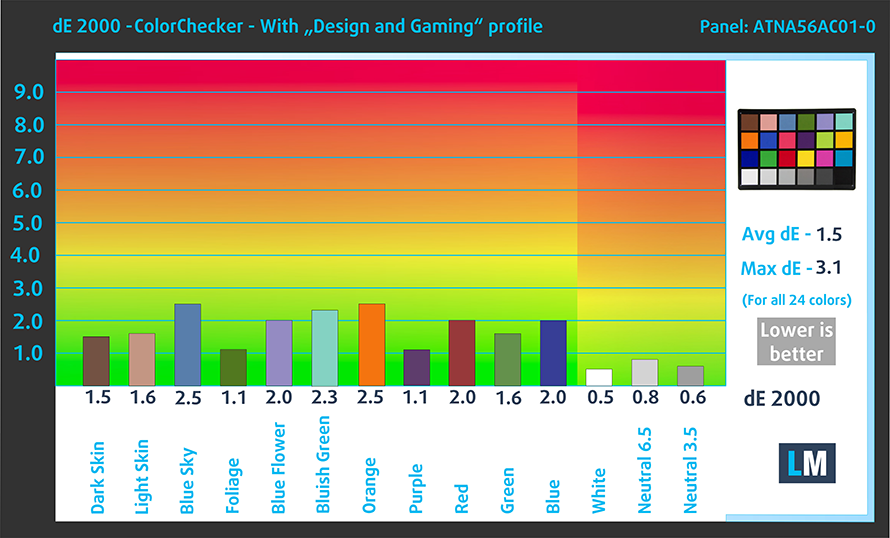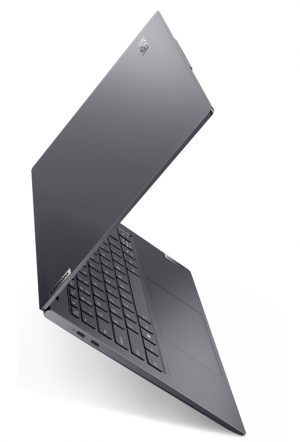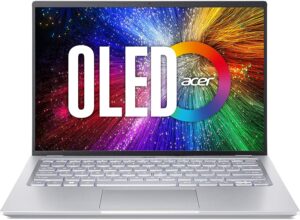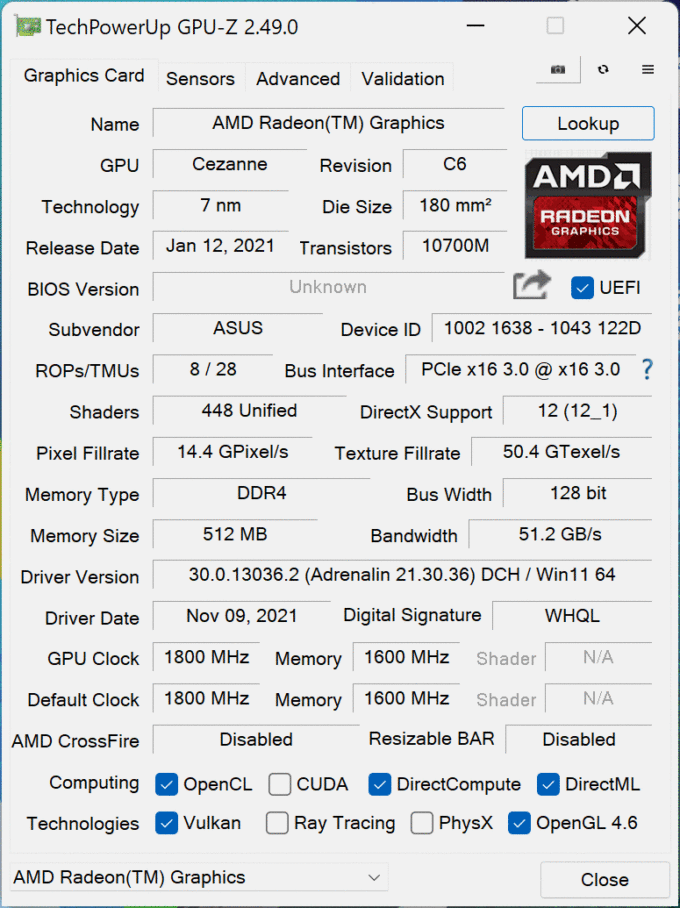ASUS Vivobook S 15 OLED (M3502) review
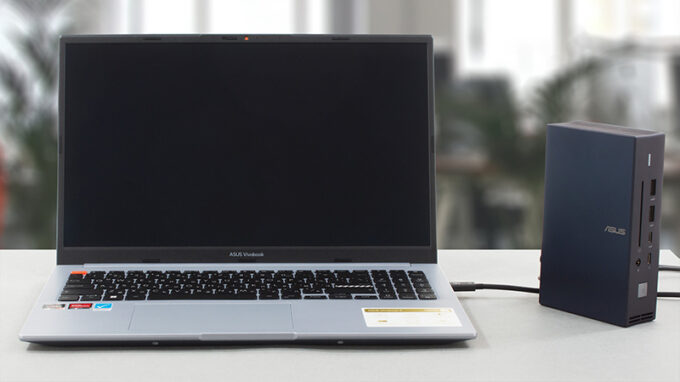 We live in a world, where laptops get more expensive. The main reason for that is the modern practice of new CPUs being released every year. But at some point, the upgrades were poised to become only incremental. This is what happened with AMD this year (at least regarding the computational performance). Essentially, this paves the way for Ryzen 5000H devices to become best-sellers again, due to their lower price.
We live in a world, where laptops get more expensive. The main reason for that is the modern practice of new CPUs being released every year. But at some point, the upgrades were poised to become only incremental. This is what happened with AMD this year (at least regarding the computational performance). Essentially, this paves the way for Ryzen 5000H devices to become best-sellers again, due to their lower price.
The VivoBook S 15 OLED (M3502) is one such notebook. It has a youthful vibe, paired with pretty capable hardware, and – as the name suggests, a display to die for. You still have the option to choose between two configurations – a 1080p panel with 600 nits HDR peak brightness, full DCI-P3 color coverage, True Blacks, and a 60Hz refresh rate or … or 2880 by 1620p 120Hz unit with the same goodies of the former one.
We are going to talk more about the reasons to buy an OLED-equipped laptop later on, but first, we have to discuss the build quality. Naturally, this is the first thing you get to experience even before you get your laptop (provided you have access to a brick-and-mortar electronics shop around you).
You can check the prices and configurations in our Specs System: https://laptopmedia.com/series/asus-vivobook-s-15-oled-m3502-amd-ryzen-5000-series/
Contents
Specs Sheet
- HDD/SSD
- up to 2000GB SSD
- M.2 Slot
- 1x 2280 M.2 NVMe slot See photo
- RAM
- up to 32GB
- OS
- Windows 11 Home, Windows 11 Pro
- Battery
- 70Wh, 3-cell
- Body material
- Plastic / Polycarbonate, Aluminum
- Dimensions
- 359.8 x 232.9 x 18.9 mm (14.17" x 9.17" x 0.74")
- Weight
- 1.80 kg (4 lbs)
- Ports and connectivity
- 1x USB Type-A
- 2.0
- 1x USB Type-A
- 3.2 Gen 1 (5 Gbps)
- 2x USB Type-C
- 3.2 Gen 2 (10 Gbps), Power Delivery (PD), DisplayPort
- HDMI
- 2.0
- Card reader
- Ethernet LAN
- Wi-Fi
- 802.11ax
- Bluetooth
- 5.0
- Audio jack
- 3.5mm Combo Jack
- Features
- Fingerprint reader
- optional
- Web camera
- HD with privacy shutter
- Backlit keyboard
- Microphone
- Array Microphone with Cortana and Alexa voice rec.
- Speakers
- Speakers by Harman Kardon, Smart Amp
- Optical drive
- Security Lock slot
All ASUS VivoBook S 15 OLED (M3502, AMD Ryzen 5000 Series) configurations
What’s in the box?
The cardboard box this laptop comes in is pretty plain. Of course, there is a reason for that, and it is not only to cut costs. On the inside, you will find text, encouraging you to help the planet by recycling and reusing things when you can. Anyways, the package contains the mandatory paperwork, some stickers, hidden in a Vivobook-branded envelope, as well as a 90W USB Type-C power adapter.
Design and construction
It has a fresh, but pretty orthodox design. The lid is made out of aluminum, while the base is plastic. Interestingly, ASUS has treated the surface with an antimicrobial finish, which is great for germophobes, and pretty much everyone else.
This laptop has a profile of 18.9mm and weighs 1.80 kilos. Subjectively, it looks good, and one of the reasons for that is the embossed Vivobook logo on the lid cover.
Since we are talking about the lid that much, we have to say that it doesn’t open with a single hand. On the other side, it is good to see the thin bezels surrounding the glossy display. Moreover, the 720p Web camera sports a privacy shutter. Unfortunately, it is a bit stiff, which makes you use your fingernails. Respectively, this may result in some scratches on the plastic surface around the shutter switch.
By the way, there is one more feature of this device that is pretty good – its 180° display opening mechanism. This makes it a lot easier to present some of your work to other people.
Next, let’s take a look at the base. The first thing that stands out is the orange “Escape” key. On its opposite location of the function key bar, you will find the Power button, which sits flush with the base, and sports an optional fingerprint reader. The keyboard is pretty comfortable with its decent key travel and clicky feedback. You are also treated to a backlight.
Moving to the touchpad, we see a large unit with accurate tracking and responsive input. The latter is also aided by the super quick response times of the OLED display. Interestingly, there are some symbols between the touchpad and the keyboard. There, you can read the inspirational wording of Vivobook’s motto. In addition, there are some large bars, separated by four smaller ones. Yes, the small ones are exactly one centimeter apart, so you can use your laptop to measure your … success.
Turn the laptop upside down, and you will find the speaker cutouts, as well as the rather weird ventilation grill. After the cool air is drawn inside the laptop, it gets exhausted through two vents – one on the left side, and one on the back.
Ports
On the left side, there is a single USB Type-A 2.0 connector. Then, on the right, you get an HDMI 2.0 connector, two USB Type-C 3.2 (Gen. 2) ports with DisplayPort and Power Delivery capabilities, a USB Type-A 3.2 (Gen. 1) port, and an Audio jack.
Disassembly, upgrade options, and maintenance
To get inside this notebook, you need to undo 10 Torx-head screws. Then, pry the bottom panel with a plastic tool, and carefully lift it away from the chassis.
Here, we find a 70Wh battery pack. It lasts for 16 hours and 30 minutes of Web browsing, or more than 10 hours of video playback. To take it out, you need to unplug the connector. Then, remove the steel support bracket, and undo the 6 Phillips-head screws, that keeps the battery in place.
There are 8GB of DDR4 memory soldered to the motherboard, with a single SODIMM slot offering a further expansion of up to 16GB. Storage-wise, there is one M.2 PCIe x4 slot, which works with Gen 3 SSDs.
This laptop’s cooling comprises two heat pipes, two heat sinks, and one fan. Also, you will find a heat spreader on top of the VRMs.
Display quality
ASUS Vivobook S 15 OLED (M3502) is equipped with an OLED panel, Samsung ATNA56AC01-0 (SDC416E). Its diagonal is 15.6-inch (39.62 cm), and the resolution – 2880 x 1620p. Additionally, the screen ratio is 16:9, the pixel density – 212 ppi, and their pitch – 0.12 x 0.12 mm. The screen can be considered Retina when viewed from at least 40 cm (from this distance, the average human eye can’t see the individual pixels).
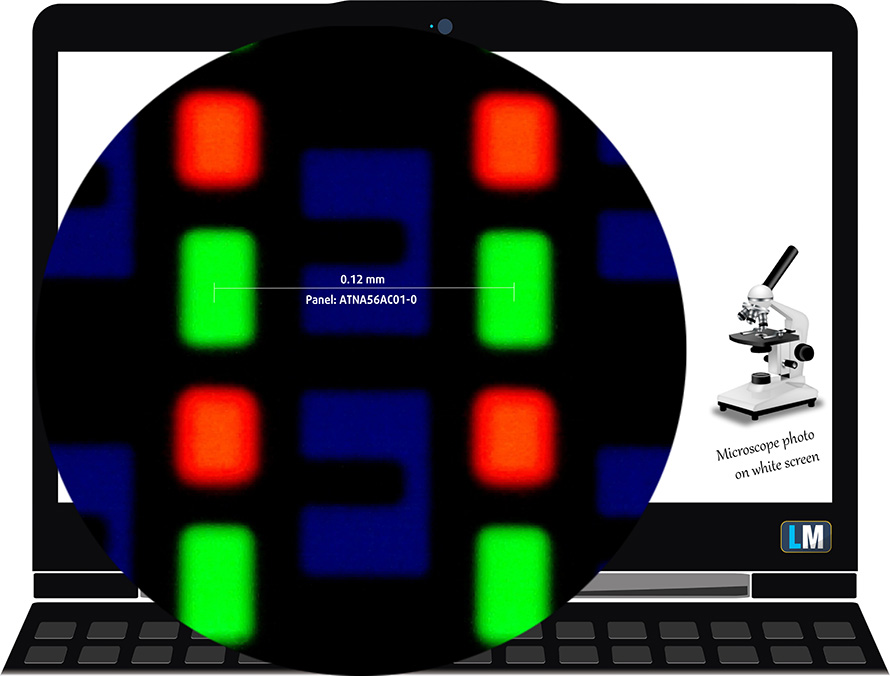
Viewing angles are comfortable. We offer images at different angles to evaluate the quality.

The maximum measured brightness is 401 nits (cd/m2) in the middle of the screen (HDR off) with a maximum deviation of 2%. The Correlated Color Temperature on a white screen and at maximum brightness is 6600K (Normal mode) – almost matching the 6500K temperature for sRGB.
In the illustration below you can see how the display performs from a uniformity perspective.
Values of dE2000 over 4.0 should not occur, and this parameter is one of the first you should check if you intend to use the laptop for color-sensitive work (a maximum tolerance of 2.0 ). The contrast ratio here is incomparably better than that of the IPS and TN panels and is mathematically infinite.
To make sure we are on the same page, we would like to give you a little introduction to the sRGB color gamut and the Adobe RGB. To start, there’s the CIE 1976 Uniform Chromaticity Diagram that represents the visible specter of colors by the human eye, giving you a better perception of the color gamut coverage and the color accuracy.
Inside the black triangle, you will see the standard color gamut (sRGB) that is being used by millions of people on HDTV and on the web. As for the Adobe RGB, this is used in professional cameras, monitors, etc for printing. Basically, colors inside the black triangle are used by everyone and this is the essential part of the color quality and color accuracy of a mainstream notebook.
Still, we’ve included other color spaces like the famous DCI-P3 standard used by movie studios, as well as the digital UHD Rec.2020 standard. Rec.2020, however, is still a thing of the future and it’s difficult for today’s displays to cover that well. We’ve also included the so-called Michael Pointer gamut, or Pointer’s gamut, which represents the colors that naturally occur around us every day.
The yellow dotted line shows ASUS Vivobook S 15 OLED (M3502)’s color gamut coverage.
Its display covers 100% of the sRGB/ITU-R BT.709 (web/HDTV standard) in CIE1976 and 100% of DCI-P3 providing a punchy and vibrant image.
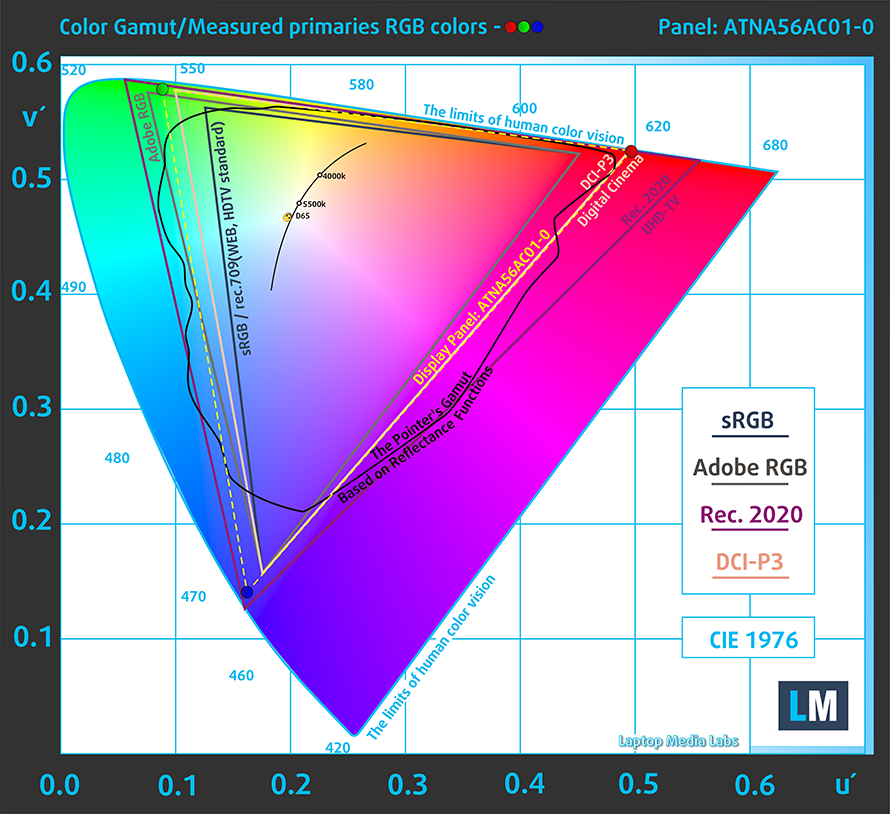
Our “Design and Gaming” profile delivers optimal color temperature (6500K) at 140 cd/m2 luminance and sRGB gamma mode.
We tested the accuracy of the display with 24 commonly used colors like light and dark human skin, blue sky, green grass, orange, etc. You can check out the results in factory condition and also, with the “Design and Gaming” profile.
Below you can compare the scores of ASUS Vivobook S 15 OLED (M3502) with the default settings (left), and with the “Gaming and Web design” profile (right).
You can also see a comparison between the default settings (left), and the “Gaming and Web design profile” (right) in the P3-D65 color space.
The next figure shows how well the display is able to reproduce really dark parts of an image, which is essential when watching movies or playing games in low ambient light.
The left side of the image represents the display with stock settings, while the right one is with the “Gaming and Web Design” profile activated. On the horizontal axis, you will find the grayscale, and on the vertical axis – the luminance of the display. On the two graphs below you can easily check for yourself how your display handles the darkest nuances but keep in mind that this also depends on the settings of your current display, the calibration, the viewing angle, and the surrounding light conditions.

Response time (Gaming capabilities)
We test the reaction time of the pixels with the usual “black-to-white” and “white-to-black” method from 10% to 90% and vice versa.
We recorded Fall Time + Rise Time = 2 ms – insane speed.
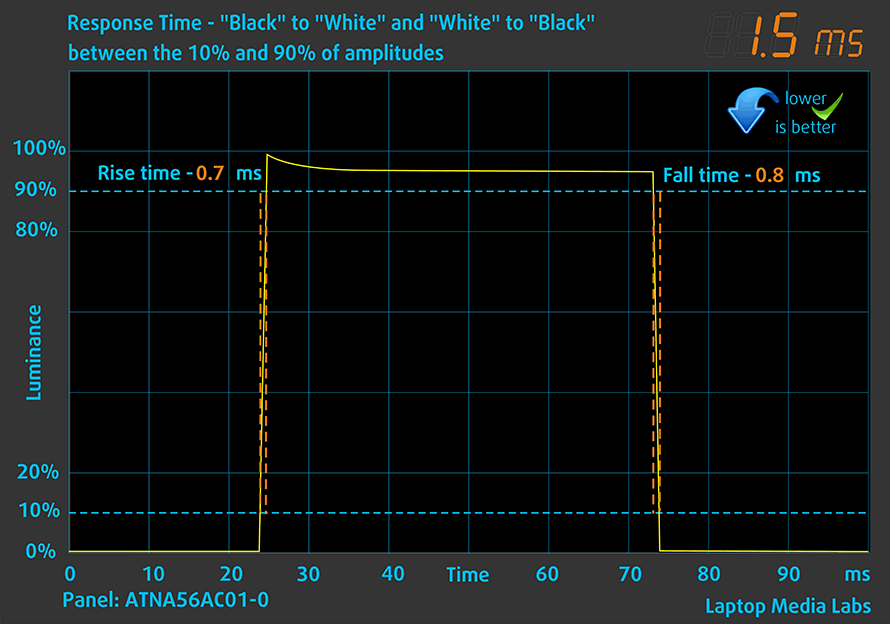
After that, we test the reaction time of the pixels with the usual “Gray-to-Gray” method from 50% White to 80% White and vice versa between 10% and 90% of the amplitude.
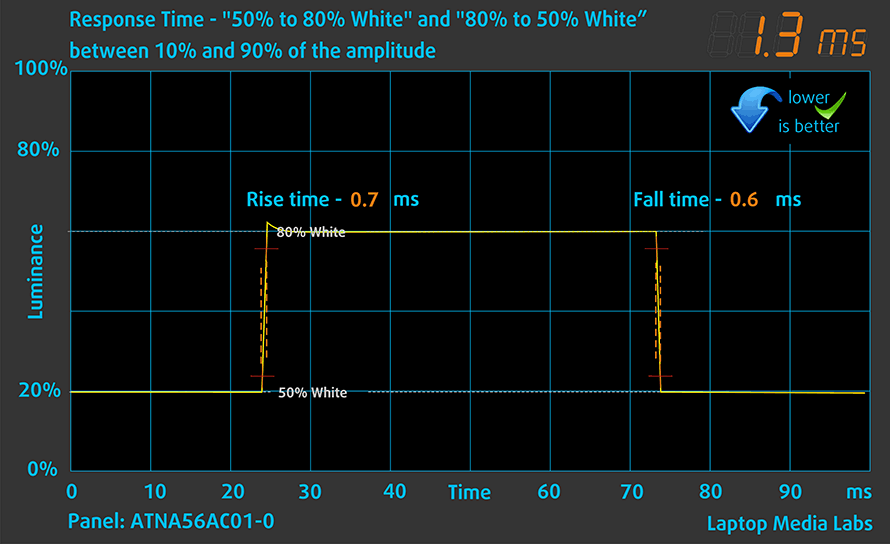
Health impact – PWM / Blue Light
PWM (Screen flickering)
Pulse-width modulation (PWM) is an easy way to control monitor brightness. When you lower the brightness, the light intensity is not lowered, but instead turned off and on by the electronics with a frequency indistinguishable to the human eye. In these light impulses, the light/no-light time ratio varies, while brightness remains unchanged, which is harmful to your eyes. You can read more about that in our dedicated article on PWM.
Unfortunately, ASUS Vivobook S 15 OLED (M3502)’s panel uses low-frequency PWM for brightness adjustment up until 95 nits. Afterwards, we detected small pulsations, which makes the display relatively safe in this aspect (after 95 nits).
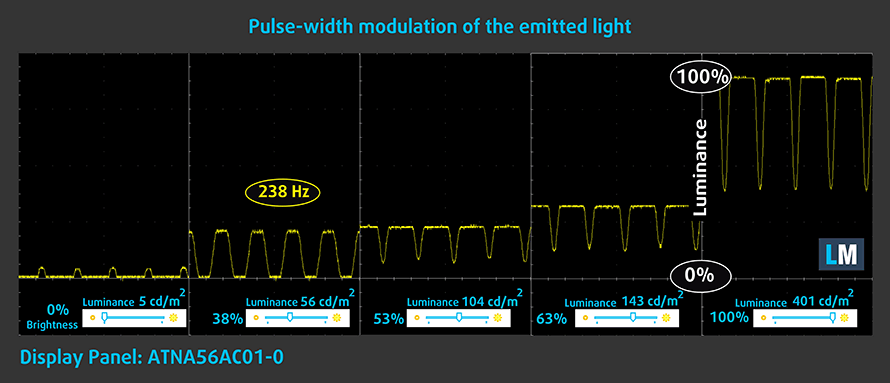
Blue light emissions
Installing our Health-Guard profile not only eliminates PWM but also reduces the harmful Blue Light emissions while keeping the colors of the screen perceptually accurate. If you’re not familiar with the Blue light, the TL;DR version is – emissions that negatively affect your eyes, skin, and your whole body. You can find more information about that in our dedicated article on Blue Light.
Gloss level measurement
Glossy-coated displays are sometimes inconvenient in high ambient light conditions. We show the level of reflection on the screen for the respective laptop when the display is turned off and the measurement angle is 60° (in this case, the result is 160 GU).
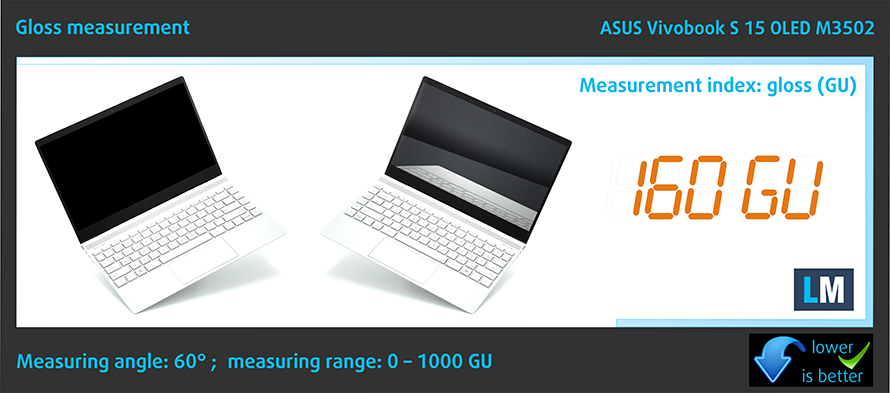
Buy our profiles
Since our profiles are tailored for each individual display model, this article and its respective profile package are meant for ASUS Vivobook S 15 OLED (M3502) configurations with 15.6″ Samsung ATNA56AC01-0 (SDC416E) (2880 x 1620p) AMOLED panel.
*Should you have problems with downloading the purchased file, try using a different browser to open the link you’ll receive via e-mail. If the download target is a .php file instead of an archive, change the file extension to .zip or contact us at [email protected].
Read more about the profiles HERE.
In addition to receiving efficient and health-friendly profiles, by buying LaptopMedia's products you also support the development of our labs, where we test devices in order to produce the most objective reviews possible.

Office Work
Office Work should be used mostly by users who spend most of the time looking at pieces of text, tables or just surfing. This profile aims to deliver better distinctness and clarity by keeping a flat gamma curve (2.20), native color temperature and perceptually accurate colors.

Design and Gaming
This profile is aimed at designers who work with colors professionally, and for games and movies as well. Design and Gaming takes display panels to their limits, making them as accurate as possible in the sRGB IEC61966-2-1 standard for Web and HDTV, at white point D65.

Health-Guard
Health-Guard eliminates the harmful Pulse-Width Modulation (PWM) and reduces the negative Blue Light which affects our eyes and body. Since it’s custom tailored for every panel, it manages to keep the colors perceptually accurate. Health-Guard simulates paper so the pressure on the eyes is greatly reduced.
Get all 3 profiles with 33% discount
Sound
ASUS Vivobook S 15 OLED (M3502)’s Harman Kardon speakers produce a nice and crisp sound of good quality. Its low, mid, and high tones are all clear of deviations.
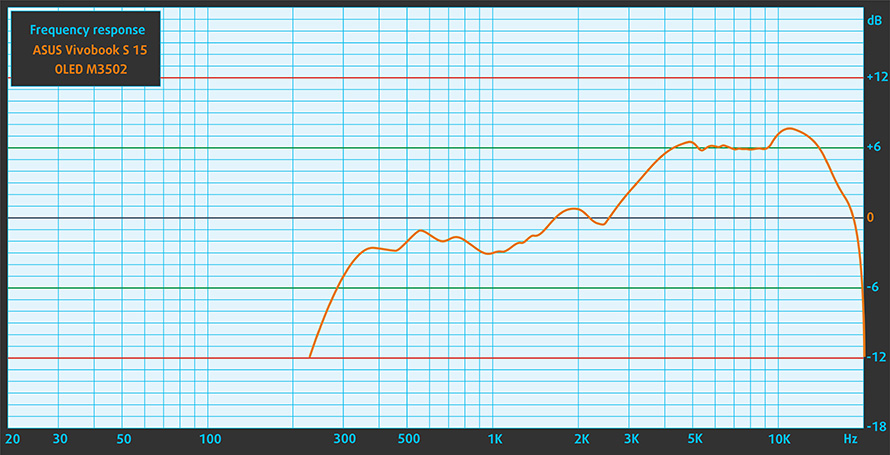
Drivers
All drivers and utilities for this notebook can be found here: https://www.asus.com/Laptops/For-Home/Vivobook/Vivobook-S-15-OLED-M3502-AMD-Ryzen-5000-Series/HelpDesk_Download/
Battery
Now, we conduct the battery tests with the Windows Better performance setting turned on, screen brightness adjusted to 120 nits, and all other programs turned off except for the one we are testing the notebook with. This device has a 70Wh battery pack. It lasts for 16 hours and 26 minutes of Web browsing, or 10 hours and 18 minutes of video playback.
In order to simulate real-life conditions, we used our own script for automatic web browsing through over 70 websites.
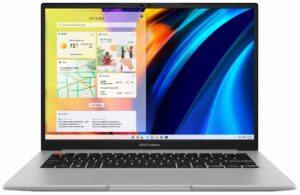

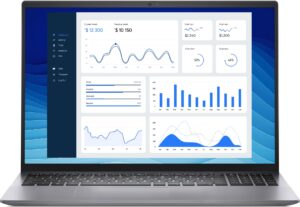
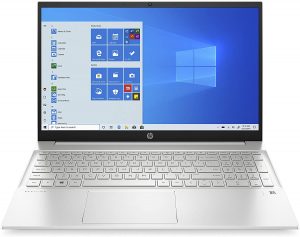
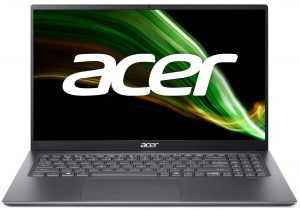
For every test like this, we use the same video in HD.





CPU options
This notebook can be found with the Ryzen 5 5600H, or the Ryzen 7 5800H. In addition, there is another version of the series, which is offered with Ryzen 6000H CPUs.
Results are from the Cinebench R23 CPU test (the higher the score, the better)
Results are from our Photoshop benchmark test (the lower the score, the better)
GPU options
There is only integrated graphics at your disposal.
Results are from the 3DMark: Time Spy (Graphics) benchmark (higher the score, the better)
Results are from the 3DMark: Fire Strike (Graphics) benchmark (higher the score, the better)
Results are from the 3DMark: Wild Life benchmark (higher the score, the better)
Results are from the Unigine Superposition benchmark (higher the score, the better)
Gaming tests

| CS:GO | HD 1080p, Low (Check settings) | HD 1080p, Medium (Check settings) | HD 1080p, MAX (Check settings) |
|---|---|---|---|
| Average FPS | 146 fps | 91 fps | 60 fps |

| DOTA 2 | HD 1080p, Low (Check settings) | HD 1080p, Normal (Check settings) | HD 1080p, High (Check settings) |
|---|---|---|---|
| Average FPS | 139 fps | 81 fps | 44 fps |
Temperatures and comfort
Max CPU load
In this test we use 100% on the CPU cores, monitoring their frequencies and chip temperature. The first column shows a computer’s reaction to a short load (2-10 seconds), the second column simulates a serious task (between 15 and 30 seconds), and the third column is a good indicator of how good the laptop is for long loads such as video rendering.
Average core frequency (base frequency + X); CPU temp.
| AMD Ryzen 5 5600H (45W TDP) | 0:02 – 0:10 sec | 0:15 – 0:30 sec | 10:00 – 15:00 min |
|---|---|---|---|
| ASUS Vivobook S 15 OLED (M3502) | 3.41 GHz (B+3%) @ 92°C | 3.15 GHz @ 92°C | 3.11 GHz @ 92°C |
| Lenovo IdeaPad Gaming 3 (15″, 2021) | 3.85 GHz (B+17%) @ 82°C | 3.85 GHz (B+17%) @ 92°C | 3.84 GHz (B+16%) @ 98°C |
| Lenovo ThinkBook 16p Gen 2 | 3.68 GHz (B+12%) @ 86°C | 3.67 GHz (B+11%) @ 93°C | 3.53 GHz (B+7%) @ 100°C |
| ASUS Vivobook Pro 15 OLED (M3500) | 3.52 GHz (B+7%) @ 78°C | 3.58 GHz (B+8%) @ 94°C | 3.40 GHz (B+3%) @ 90°C |
| Acer Nitro 5 (AN515-45) | 3.57 GHz (B+8%) @ 69°C | 3.47 GHz (B+5%) @ 69°C | 3.56 GHz (B+8%) @ 82°C |
| Lenovo Yoga Slim 7 Pro (14) | 3.43 GHz (B+4%) @ 78°C | 3.35 GHz (B+2%) @ 88°C | 3.06 GHz @ 93°C |
| Lenovo Legion 5 Pro (16″) | 3.77 GHz (B+14%) @ 84°C | 3.79 GHz (B+15%) @ 89°C | 3.76 GHz (B+14%) @ 97°C |
This test shows us that the Vivobook S 15 OLED (M3502) isn’t the best performer among those laptops equipped with the Ryzen 5 5600H.
Comfort during full load
In addition to that, it gets quite noisy during long extreme loads. On the bright side, the keyboard rarely reaches a maximum temperature higher than 37°C.

Verdict
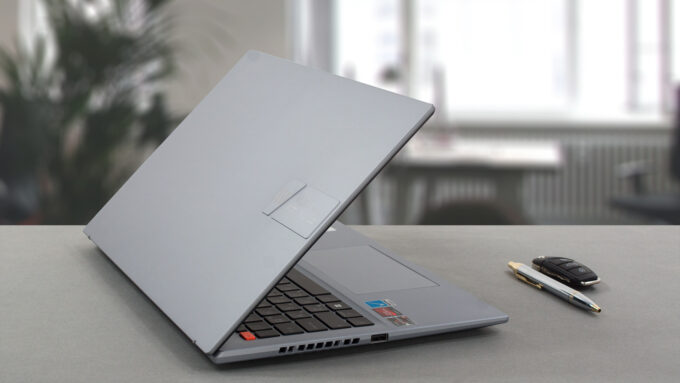 So what have we learned in this review? First, and foremost – the main event here is the display. It is able to singlehandedly carry the notebook through its cooling imperfections.
So what have we learned in this review? First, and foremost – the main event here is the display. It is able to singlehandedly carry the notebook through its cooling imperfections.
ASUS Vivobook S 15 OLED (M3502)’s OLED panel in the configuration we tested, has a high resolution, comfortable viewing angles, and a practically infinite contrast ratio, which leads to true blacks. In addition to that, the display is capable of covering 100% of the sRGB and DCI-P3 color gamuts, which results in a really attractive image to look at. To be honest, we were really impressed by the 120Hz refresh rate and its ultrafast response times. And yes, it supports HDR True Black 500 and has Pantone Validated colors.
Another great aspect of this laptop is its battery life. Even though it features an H-series processor, we were able to get more than 16 hours of Web browsing or 10 hours of video playback on a single charge. You shouldn’t have an issue getting an entire workday’s worth of use.
The main reason for the brilliant screen-on times is the large battery – at 70Wh there is little that can stop it. Especially when you don’t have a dedicated GPU. With that said, the situation on the inside offers you a single SODIMM slot for memory expansion of up to 16GB in combination with the 8GB soldered to the motherboard. Furthermore, there is one M.2 PCIe x4 slot, which is “limited” to Gen 3 SSDs.
This brings us to another question – should you invest in year-old hardware? Well, yes, why not?! The performance is more than good, and the price is inherently lower. Indeed, you won’t get the same performance figures as the Ryzen 6000H CPUs with their RDNA2 integrated graphics cards. But some people don’t really need a good GPU anyway.
On the other hand, there are features like the fingerprint reader, privacy shutter on the HD Web camera, and the customization provided by the included stickers. And you shouldn’t underestimate the importance of clear conference calls. ASUS surely doesn’t as it gives you both ways Noise-cancelling technology.
You see, the Vivobook S 15 OLED (M3502) is not your ordinary laptop meant for the youth. It is a way to show the world your views, but even more – to see the world as it’s meant to be seen.
You can check the prices and configurations in our Specs System: https://laptopmedia.com/series/asus-vivobook-s-15-oled-m3502-amd-ryzen-5000-series/
Pros
- Adequate pricing
- Decent performance
- 100% sRGB and DCI-P3 coverage (Samsung ATNA56AC01-0 (SDC416E))
- HDR True Black 500 support and infinite contrast ratio (Samsung ATNA56AC01-0 (SDC416E))
- 120Hz refresh rate with blazingly quick pixel response times
- Optional Wi-Fi 6 and fingerprint reader
- Great battery life
Cons
- PWM usage (Samsung ATNA56AC01-0 (SDC416E))
- Uses USB Type-A 2.0
- The cooling is not spectacular
